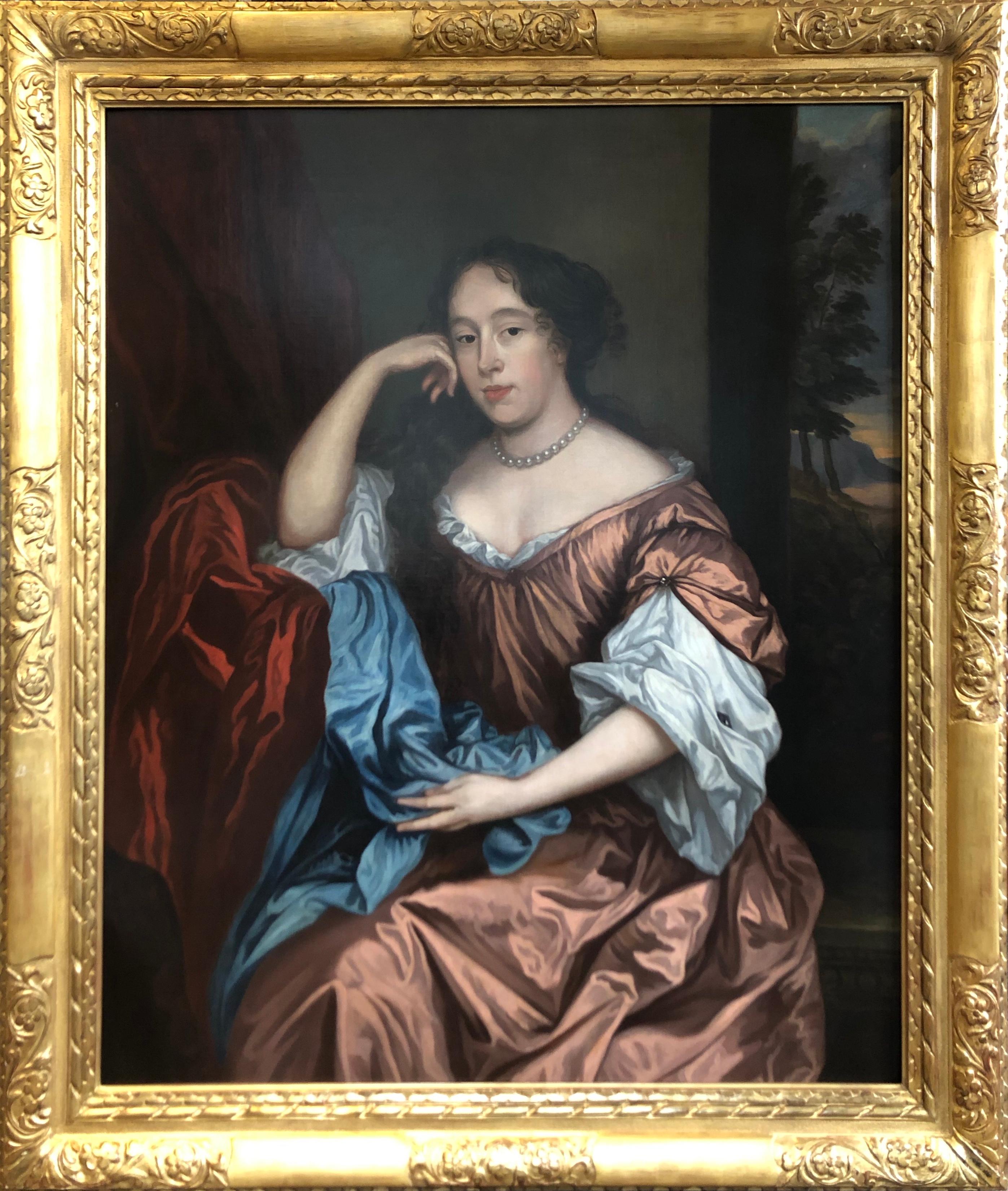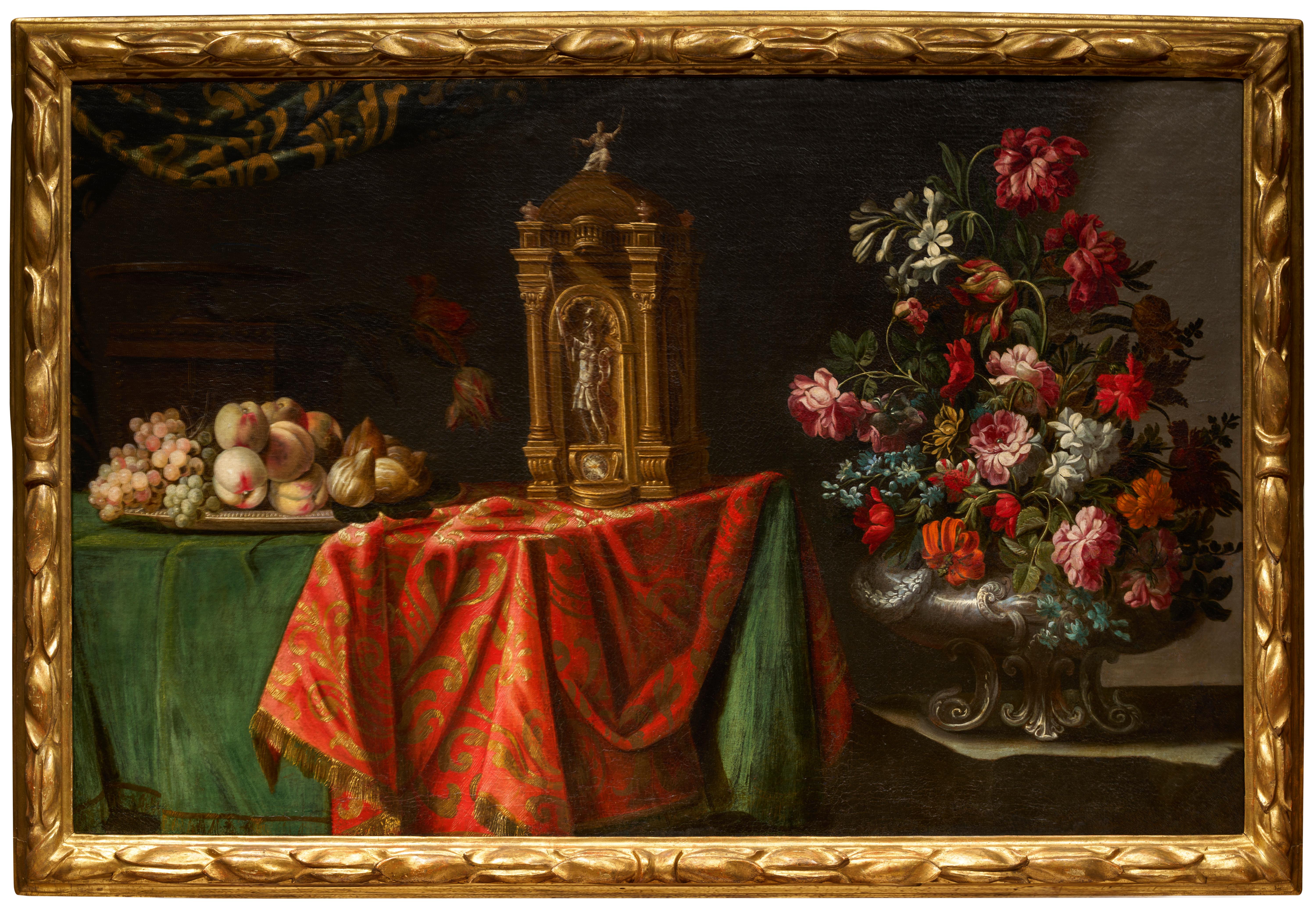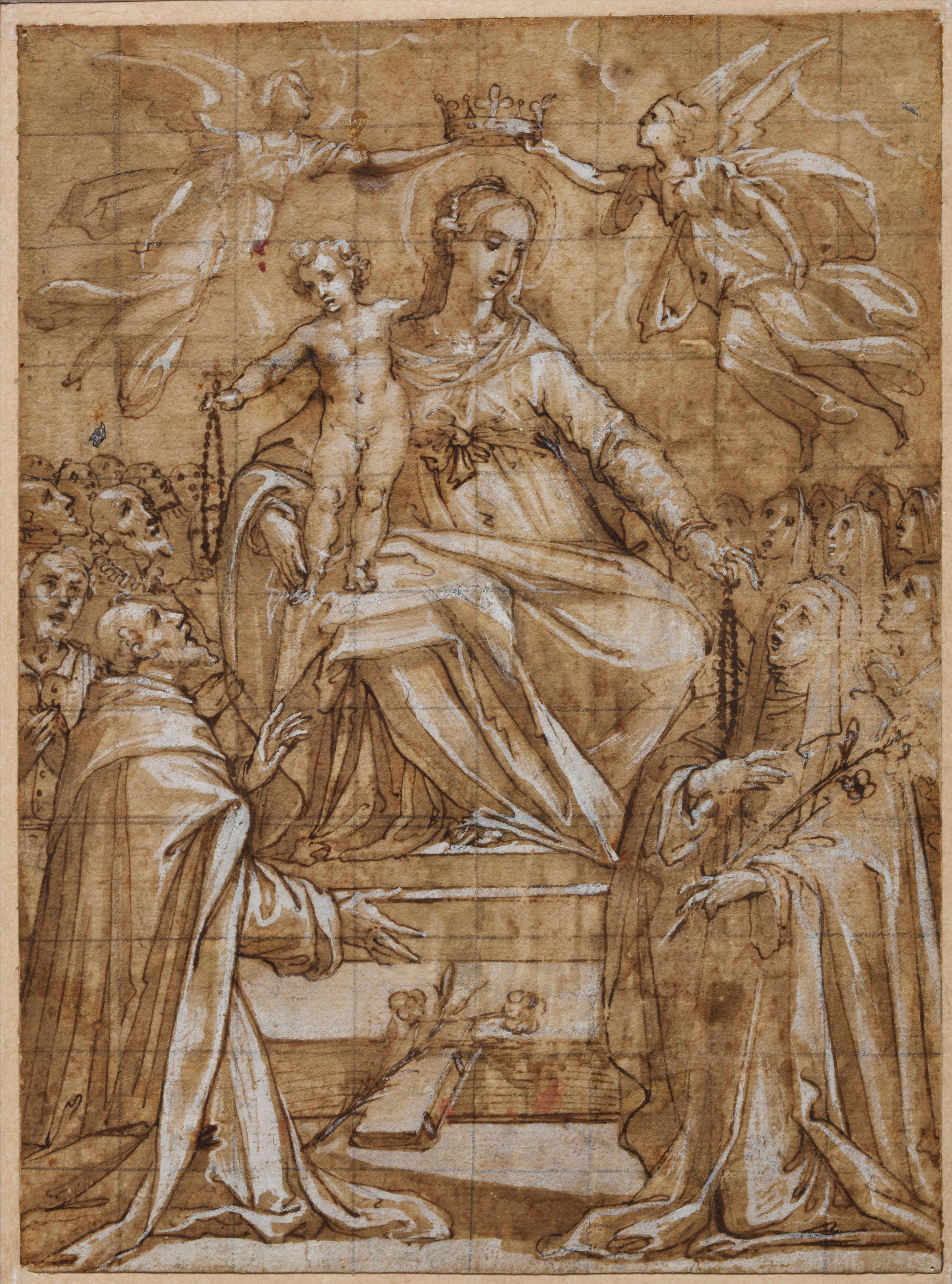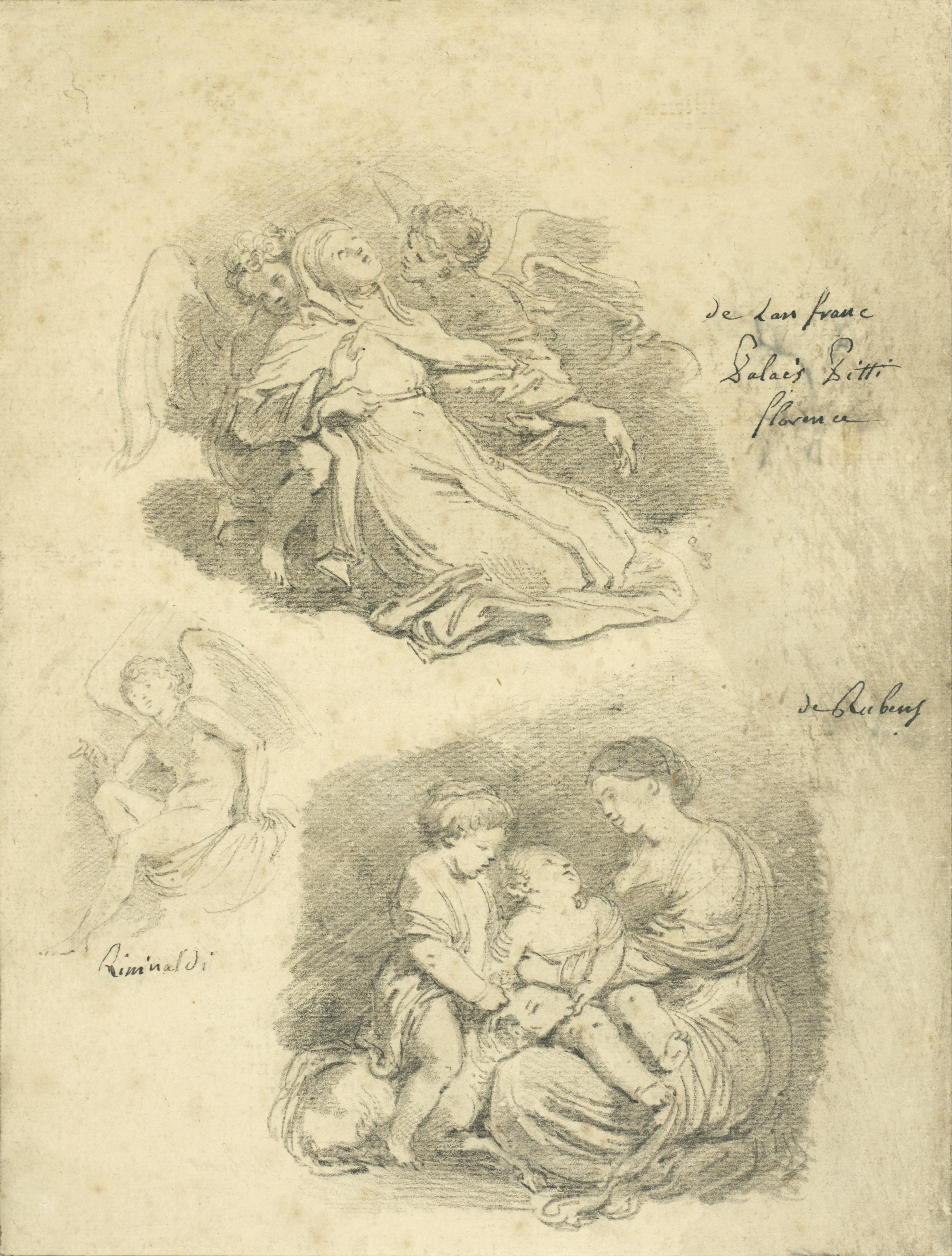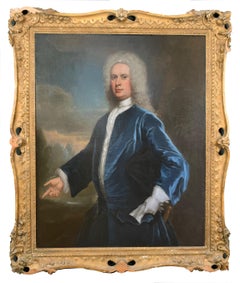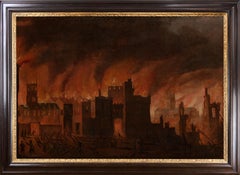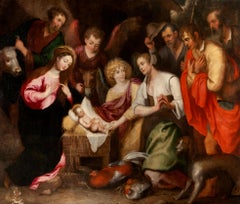
Nativity Adoration Italy Baroque Paint Oil on canvas 17th Century Flandre
View Similar Items
Want more images or videos?
Request additional images or videos from the seller
1 of 14
Circle Of Gaspar De CrayerNativity Adoration Italy Baroque Paint Oil on canvas 17th Century Flandre 1630
1630
About the Item
- Creator:Circle Of Gaspar De Crayer (1582 - 1662)
- Creation Year:1630
- Dimensions:Height: 55.52 in (141 cm)Width: 67.72 in (172 cm)
- Movement & Style:
- Period:
- Condition:
- Gallery Location:Riva del Garda, IT
- Reference Number:1stDibs: LU98813991951
About the Seller
4.8
Platinum Seller
These expertly vetted sellers are 1stDibs' most experienced sellers and are rated highest by our customers.
Established in 2017
1stDibs seller since 2018
200 sales on 1stDibs
More From This SellerView All
- Flowers Paint Oil on canvas Old master 17th Century Italy Still-life ArtLocated in Riva del Garda, ITMaster of the Grotesque Vase (active in Rome and Naples in the first quarter of the 17th century) Still life of flowers in a classic vase oil on canvas 66 x 51 cm, In frame cm. 82 x...Category
17th Century Old Masters Paintings
MaterialsOil
$7,616 Sale Price20% Off - Portrait Paint Oil on canvas Old master 16/17th Century Italian Raffaello ArtLocated in Riva del Garda, ITTuscan painter active towards the end of the 16th century Portrait of Captain Niccolò Orsini (Pitigliano, 1442 - Lonigo, 1510), count of Pitigliano and Nola. Tuscany, end of the 16th century Oil on canvas, 64 x 47 cm., Framed 89 x 73 cm. The portrait we present to you shows the effigy of a vigorous high-ranking male figure in armor, in the most typical Renaissance pose, half-length and taken in profile, with his face and gaze turned to the side; the serious and intense expression and the facial features evoke at first glance the portraiture of early Florentine mannerism. He is Niccolò III Orsini (Pitigliano, 1442 - Lonigo, 1510), count of Pitigliano and Nola and son of Aldobrandino Orsini, famous leader and captain (or capitano di ventura) who lived between the fifteenth and sixteenth centuries, who served for the state Pontifical in Naples and Florence and above all for the Republic of Venice. Portraiture with these characters, which derives from ancient coinage, was used in the sixteenth century in the sequences of Portraits of Illustrious Men, both in painting and in sculpture. The profile portrait was in fact a genre reserved, according to the Renaissance tradition, for celebrations, presenting those characteristics of imperturbability typical of the military role covered. Our painting is a work created by an author active in Tuscany towards the end of the sixteenth century, adhering to those pictorial styles made famous by the portraitist Cristofano di Papi dell'Altissimo (1530-1605), a pupil of Bronzino and then of Pontormo, known for having created a collection of about 500 portraits of illustrious men, known as the 'Gioviana Series' (now in the Uffizi Gallery); and among these it is possible to identify one dedicated to Niccolò Orsini. Our painting is inspired, in particular, by a print taken from the collection of prints...Category
16th Century Old Masters Paintings
MaterialsOil
- Landscape Crucifixion Christ Paint Oil on canvas Old master 17th CenturyBy Scipione Compagni, or Compagno (Naples, about 1624 - after 1680)Located in Riva del Garda, ITScipione Compagni, or Compagno (Naples, about 1624 - after 1680) Fantastic landscape with the Crucifixion of Christ on Mount Calvary Oil painting on canvas cm. 47 x 62 with antique frame cm. 63 x 78 cm. We present with great pleasure this rich representation, executed in the second half of the seventeenth century, whose stylistic and composition features reflect the stylistic features of the Neapolitan lesson: the warm colors, the lively chromatic range, the quick but precise brushstrokes are elements that lead us, in particular, to the hand of Scipione Compagno. It fits fully into the classic production of the Neapolitan painter, characterized by compositions filled with numerous figures, assembled with great formal elegance, where the painter re-elaborates the mannerist suggestions but in a theatrical key and consequently reaches an extremely refined Baroque vision of the narrative. The reminiscences with the painting of Filippo Angeli are evident, but above all the similarities with Domenico Gargiulo, known as Micco Spadaro, distinguished by elegant and precious chromatic accords, and with some references to Roman painting of the early seventeenth century. In the work, in fact, references to Roman and Neapolitan classicism are observed, with the bright and bright palette that we can trace back to the painter's mature works. The painting, characterized by a multitude of characters, shows the scene of the Crucifixion on Mount Calvary, where the three crosses stand out against the background illuminated by a clear light, in an almost otherworldly atmosphere of a mountainous river landscape in front of the city of Jerusalem. in the distance. Watching the dying Christ tortured we can see the three Marys, with the Virgin in red dress and blue cloak, surrounded by other women and soldiers, some of them on horseback, one of whom holds a spear with which he inflicted the wound in the side of Christ. In the foreground, again, numerous men, women and children, who attend the scene of the Crucifixion. The bright and clear colorism of the work in question is typical of Neapolitan painting...Category
17th Century Old Masters Paintings
MaterialsOil
$7,730 Sale Price20% Off - Landscape Village Market Paint Oil on canvas Old master 18th Century Flemish ArtBy Circle of Pieter van Bredael (Antwerp 1629 - 1719)Located in Riva del Garda, IT18th century Dutch school (circa 1700.) - Circle of Pieter van Bredael (Antwerp 1629 - 1719) A village square with a market scene oil on canvas, 78 x 108 cm., Framed 94 x 121 cm. Questa affascinante scena popolare con un brulicante mercato nella main piazza è un opera di un artist fiammingo attivo intorno al 1700: si tratta di un interesting spaccato di vita dailyiana di un piccolo villaggio dell’Olanda del Secolo d´Oro. Nella piazza brulicante di gente con sullo sfondo delle tipiche case ed una grande fontana zampillante, possiamo assistere al trambusto che ruota attorno al giorno di mercato, con figure di ogni estrazione sociale indaffarate nelle proprie attività. Anche is difficult to ricondurre la tela alla mano di un autore in particolare, data la predilezione di molti autori a questo genere di ricche composizioni, possiamo però avvicinarne l'esecuzione alla cerchia del pittore di Anversa Pieter van Bredael (Anversa 1629–1719). Van Bredael, che faceva parte di una grande famiglia di pittori, è registrato come allievo nella bottega di David Ryckaert III nel 1640. Dopo viaggi di studio nei Paesi Bassi e in Spagna divenne maestro della Gilda di San Luca ad Anversa nel 1651. Lavorò anche in Italia, soprattutto in Roma, dove venne strongly influenzato dallo stile compositivo del gruppo dei Bamboccianti. Era ben noto per le sue scene di mercato altamente fantasiose che illustravano lo spettro diversificato della vita dailyiana della città. I suoi dipinti di paesaggi sono caratterizzati da accenti di colori vivaci, spesso popolati da molte figure che non possono che evocare lo stile di Jan Brueghel il Vecchio. Vi mostriamo di seguito alcune operates dell’autore, con cui è agevole ravvisare stilistiche analogy e compositiva con il nostro dipinto. - Dorotheum, Vienne, Alte Meister...Category
18th Century Old Masters Paintings
MaterialsOil
$6,706 Sale Price20% Off - Landscape Nativity Religious Paint Oil on canvas Old master 17th Century ItalianBy Scipione Compagni, or Compagno (Naples, about 1624 - after 1680)Located in Riva del Garda, ITScipione Compagni, or Compagno (Naples, about 1624 - after 1680) Fantastic landscape with the Nativity of Christ and the appearance of the angel to the shepherds Oil painting on canvas cm. 47 x 62 with antique frame cm. 63 x 78 cm. We present with great pleasure this rich representation, executed in the second half of the seventeenth century, whose stylistic and composition features reflect the stylistic features of the Neapolitan lesson: the warm colors, the lively chromatic range, the quick but precise brushstrokes are elements that lead us, in particular, to the hand of Scipione Compagno. It fits fully into the classic production of the Neapolitan painter, characterized by compositions filled with numerous figures, assembled with great formal elegance, where the painter re-elaborates the mannerist suggestions but in a theatrical key and consequently reaches an extremely refined Baroque vision of the narrative. The reminiscences with the painting of Filippo Angeli are evident, but above all the similarities with Domenico Gargiulo, known as Micco Spadaro, distinguished by elegant and precious chromatic accords, and with some references to Roman painting of the early seventeenth century. In the work, in fact, references to Roman and Neapolitan classicism are observed, with the bright and bright palette that we can trace back to the painter's mature works. The painting depicts, in a mountainous river landscape, in front of a large ancient building that stands on a rock, the birth of Christ with Joseph and Mary, surrounded by numerous shepherds who have come to honor the sacred event. On the right in the foreground a multitude of other figures, some of which indicate the birth of Messiah with their hands. From the top of a blue sky a luminous glow that pierces the clouds gives way to a crowd of flying angels who spread rays of light; this glow, directed towards a small group of figures, serves to immortalize a very interesting detail, that is the apparition of the angel to the shepherds (Luke II, 8-14) to announce to them the birth of the Savior. "... here I announce to you a great joy, which will be of all the people: today a savior, who is Christ the Lord, was born to you in the city of David. This is the sign for you: you will find a child wrapped in swaddling clothes, lying in a manger ". The bright and clear colorism of the work in question is typical of Neapolitan painting...Category
17th Century Old Masters Paintings
MaterialsOil
$7,616 Sale Price20% Off - Landscape Zuccarelli Paint Oil on canvas Old master 18th Century Italian ViewBy Francesco Zuccarelli (Pitigliano 1702 - Florence 1788)Located in Riva del Garda, ITFrancesco Zuccarelli (Pitigliano 1702 - Florence 1788), circle of Landscape with river and resting shepherds First half of the 18th century oil painting on canvas cm. 60 x 93, within a carved and gilded wooden frame cm. 75 x 108 This delightful landscape view animated by a family of shepherds who rest from their daily duties should be compared to the hand of Francesco Zuccarelli (Pitigliano 1702 - Florence 1788); In the landscapes painted by Zuccarelli the world is crystallized, frozen in a moment of idyllic quiet, where the 'Arcadian' sense of the landscape is rendered with that pictorial vivacity, chromatic lightness and compositional grace that we find in its entirety in his painting. By way of comparison we can compare our canvas to other compositions, including: - Landscape with river and resting shepherds, Accademia Carrara, Bergamo - Landscape with bridge and horseman, Accademia Carrara, Bergamo - Landscape with river, village, fisherman and shepherdesses' (Christie's, London May 1960, - Landscape with figures, Accademia Carrara, - Landscape with knight and figures, Accademia Carrara Tuscan by origin, Francesco Zuccarelli trained first in Florence with the landscape architect Paolo Anesi...Category
18th Century Old Masters Paintings
MaterialsOil
$7,900 Sale Price20% Off
You May Also Like
- Portrait of a Lady, After Sir Peter Lely (1610-1680) Oil PaintingBy After Sir Peter LelyLocated in Uppingham, GBOil Painting After Sir Peter Lely (1610-1680) Portrait of a Lady Housed in a Lely gold Leaf Frame. Peter Lely: In 1647 he became a member of the Pain...Category
17th Century Old Masters Portrait Paintings
MaterialsOil
- Oil Painting Portrait, attributed to John Vanderbank (1694-1739)By John VanderbankLocated in Uppingham, GBOil Painting Portrait of John Campbell, 4th Duke of Argyll,, att to John Vanderbank (1694-1739) Housed in a swept frame which has been restored after photo. Canvas Size 50" x 40", Fr...Category
1690s Old Masters Portrait Paintings
MaterialsCanvas, Oil
- Early oil depicting the Great Fire of LondonLocated in London, GBThe Great Fire of London in September 1666 was one of the greatest disasters in the city’s history. The City, with its wooden houses crowded together in narrow streets, was a natural fire risk, and predictions that London would burn down became a shocking reality. The fire began in a bakery in Pudding Lane, an area near the Thames teeming with warehouses and shops full of flammable materials, such as timber, oil, coal, pitch and turpentine. Inevitably the fire spread rapidly from this area into the City. Our painting depicts the impact of the fire on those who were caught in it and creates a very dramatic impression of what the fire was like. Closer inspection reveals a scene of chaos and panic with people running out of the gates. It shows Cripplegate in the north of the City, with St Giles without Cripplegate to its left, in flames (on the site of the present day Barbican). The painting probably represents the fire on the night of Tuesday 4 September, when four-fifths of the City was burning at once, including St Paul's Cathedral. Old St Paul’s can be seen to the right of the canvas, the medieval church with its thick stone walls, was considered a place of safety, but the building was covered in wooden scaffolding as it was in the midst of being restored by the then little known architect, Christopher Wren and caught fire. Our painting seems to depict a specific moment on the Tuesday night when the lead on St Paul’s caught fire and, as the diarist John Evelyn described: ‘the stones of Paul’s flew like grenades, the melting lead running down the streets in a stream and the very pavements glowing with the firey redness, so as no horse, nor man, was able to tread on them.’ Although the loss of life was minimal, some accounts record only sixteen perished, the magnitude of the property loss was shocking – some four hundred and thirty acres, about eighty per cent of the City proper was destroyed, including over thirteen thousand houses, eighty-nine churches, and fifty-two Guild Halls. Thousands were homeless and financially ruined. The Great Fire, and the subsequent fire of 1676, which destroyed over six hundred houses south of the Thames, changed the appearance of London forever. The one constructive outcome of the Great Fire was that the plague, which had devastated the population of London since 1665, diminished greatly, due to the mass death of the plague-carrying rats in the blaze. The fire was widely reported in eyewitness accounts, newspapers, letters and diaries. Samuel Pepys recorded climbing the steeple of Barking Church from which he viewed the destroyed City: ‘the saddest sight of desolation that I ever saw.’ There was an official enquiry into the causes of the fire, petitions to the King and Lord Mayor to rebuild, new legislation and building Acts. Naturally, the fire became a dramatic and extremely popular subject for painters and engravers. A group of works relatively closely related to the present picture have been traditionally ascribed to Jan Griffier...Category
17th Century Old Masters Landscape Paintings
MaterialsOil, Canvas
- Baroque silver Vase with Flowers with a Fruit Tray and a Clock by A. ZuccatiLocated in PARIS, FRThis unpublished composition is a recent addition to Adeodato Zuccati’s catalog. The study of this painting by Gianluca Bocchi, an Italian art historian specializing in Italian still lives, is available upon request. This composition is typical of the productions of Adeodato Zuccati, an Emilian painter...Category
Late 17th Century Old Masters Still-life Paintings
MaterialsCanvas, Oil
- Modello for the Virgin of the Rosary, a drawing by Francesco Vanni (1563 - 1610)Located in PARIS, FRFrancesco Vanni is one of the last representatives of the long Sienese pictorial tradition. In this masterly composition in pen and ink wash, he presents the Virgin of the Rosary, holding the Child Jesus on her lap, surrounded on her right by Saint Dominic and on her left by Saint Catherine of Siena. The presence of these two emblematic saints of the Dominican order is a reminder of the devotion of this order to the Rosary. 1. Francesco Vanni, a Sienese painter of the Counter-Reformation Francesco Vanni was the most important Sienese painter of the late sixteenth century and a key Italian Counter-Reformation painter. He developed a very specific style, inspired not by Florentine models but rather by the Roman, Bolognese and Marche schools, and in particular by the work of his contemporary Federico Barocci (Urbino 1535 - 1612), despite the two artists never meeting. Francesco Vanni was born in Siena around 1563-1564. His father died in 1567 and his mother remarried Arcangelo Salimbeni (1536 - 1579), then one of Siena’s leading painters. His half-brother Ventura Salembini (1568 - 1613) also became a well-known painter. He continued his apprenticeship in Bologna and Rome, where he joined the painter Giovanni de Vecchi’s (1536 - 1614) studio, where he was greatly influenced, like other Tuscan painters of the time, by the art of Federico Barocci. He devoted himself mainly to religious painting, following the canons of the Counter-Reformation. Travelling between Siena, Rome, Bologna and Parma, in 1604, he settled in Siena, where he ended his life. Vanni was also an important member of the Confraternity of the Sacro Chiodo, renowned for its demanding religious practices. His legacy also includes some important engraved work. 2. Description of the artwork The Virgin is depicted enthroned in majesty, slightly taller than the other figures that she dominates from her pedestal. Her wide robe with marked folds evokes Renaissance statuary. She is crowned by two angels in the sky. These two angels are a reminder of the custom of adding angels to crown 13th century icons which was frequent at Vanni’s time. The Child Jesus is standing on the Virgin’s right knee. With her left hand she holds out a rosary to Catherine of Siena, identifiable by a branch of lily in her hand. In a symmetrical gesture, the Child Jesus also holds out a rosary to St Dominic. Two of St Dominic’s attributes are to be found at the foot of the Virgin: a book and a branch of lilies. Vanni gives particularly delicate treatment to St. Dominic's long and slender hands. The two outstretched rosaries form the link between the heavenly register of the Virgin and the Child Jesus and the earthly register of the two Dominicans who are not crowned with a halo. This and the fact they are followed by a large crowd, indicates that they are both represented as part of the multitude of the living called to pray to the Rosary. According to the classical iconographic tradition, it would be plausible to consider that the figure looking at the viewer on the extreme left of the drawing could be a self-portrait of the painter. Francesco Vanni's face is known to us from a self-portrait kept in the Pinacoteca Nazionale in Siena. The squaring of the drawing suggests that it was used for a larger-scale altarpiece, probably for a church dedicated to St Dominic or for a Dominican convent. As of today, we have not identified the painting for which this drawing served as a preparatory modello. The Madonna of the Rosary in the Cathedral of Pitigliano (painted by Francesco Vanni in 1609) differs quite significantly from our drawing by the addition of Pope Pius V, and the inclusion of St. Dominic and St. Catherine in the celestial register. We believe that our drawing predates this painting because of its more symmetrical composition, and less Baroque influence. The presence of Saint Catherine of Siena, particularly venerated in his native town, to which Francesco Vanni returned frequently from 1590 onwards, leads us to propose a date of around 1590 - 1600 for this drawing. 3. The Rosary and the Dominican Order In order to clarify the iconographic meaning of this artwork, it is worth recalling the role of Saint Dominic in the spread of the Rosary prayer. Dominic Nuñez de Guzman was born around 1170 in Caleruega (near Burgos) in Spain and died in 1221 in Bologna, Italy. He was the founder of the order of friar preachers, commonly known as the Dominicans. He was canonised by the Church in 1234 and has since been celebrated under the name of Saint Dominic. After three days of prayer in the forest of Bouconne, near Toulouse, Dominic is said to have received the Rosary as a means of converting the Cathar population. The Dominicans subsequently made a special effort to promote this form of meditative prayer. Pope Pius V, a Dominican, included the feast of the Rosary (on October 7th) in the liturgical calendar in 1571. Rosary prayer has evolved over the centuries and traditionally consists of the recitation of three rosaries (four since St John Paul II). Each rosary consists of five tens of "Hail Mary...Category
16th Century Old Masters Figurative Drawings and Watercolors
MaterialsPen, Ink
- A landscape drawing by Claude Lorrain, with a preliminary sketch on the versoBy Claude LorrainLocated in PARIS, FRThis study presents a typical Roman countryside landscape: an ancient mausoleum in front of which a cart is passing by followed by two peasants. If the technique (a pen drawing on graphite lines, completed with a wash of brown and grey inks) and the signature inevitably evoke the art of Lorrain, we find on the verso of this drawing additional evidences that lead us to consider this unpublished drawing as a work by the master. The motif of the mausoleum has been taken up in pen on the verso in a technique that can be found in several other drawings by Lorrain. There is also a study of three characters, which can be considered as preparatory to Lorrain’s painting entitled The Port of Ostia with the Embarkation of Saint Paula, leading us to claim this attribution with a dating of around 1629. 1. Claude Lorrain or the perfection of classical landscape in Rome in the 17th century Claude Gellée was born in 1600 in Chamagne in Lorraine. Orphaned at the age of twelve, he spent a year with his brother in Freiburg, where the latter was a woodcarver. Claude Gellée then probably arrived in Rome in 1613, where he joined the workshop of Agostino Tassi (1580 - 1644) in 1617. Between 1619 and 1620 he studied for two years in Naples in the workshop of Goffredi Wals (who was himself a former pupil of Tassi). In 1625 he returned to Lorraine for two years where he worked alongside Claude Deruet. He then returned to Rome, a city he never left for the rest of his life (except for short trips to the surrounding countryside). From 1627 to 1650 he lived in Via Margutta. From 1635 onwards he became a renowned painter and commissions started to pour in. Considered during his lifetime as the most accomplished of the classical landscape painters, his reputation never faded. Between 1629 and 1635 Le Lorrain often went to the Roman countryside to draw with his friend Joachim von Sandrart (1606 - 1686). He became a member of the Academy of Saint Luke in 1633, while being closely acquainted with the Bentvueghels, this guild which brought together the young Nordic painters active in Rome. In 1643 he joined the Congregation of the Virtuosi. In 1650 he moved to Via Paolina where he lived until his death. Little is known of his intimate life. He seems to have had a daughter, Agnes, from an ancillary love affair. In 1657/ 1658 she moved in with him. Stricken with gout in 1663, he died in 1682. 2. Description of the drawing; the technique of nature studies Two peasants are walking behind a horse-drawn cart on a road that winds through ancient tombs. While a rectangular tomb with a columned facade can be seen in the distance, the cart passes an important ancient building. It has a circular shape and its partially ruined façade is decorated with columns. The start of a second floor can...Category
1660s Old Masters Landscape Drawings and Watercolors
MaterialsInk, Graphite, Pen
Recently Viewed
View AllMore Ways To Browse
Nativity Painting
Nordic School
Pair Of 17th Century Portraits
Concrete Dog
Flemish Painting Pair
Adoration Magi
Adoration Of The Magi
Italian Nativity
Woman Baby Drawing
Antique Nativity Scene
Antique Nativity Scenes
Nativity Scene Antique
Nativity Oil
Nativity Oil Painting
Antique Baby Photos
Antique Nativity Italy
French Nativity
Black Nativity
